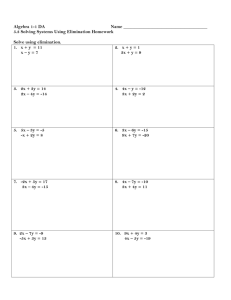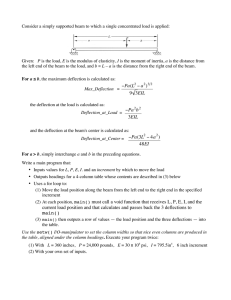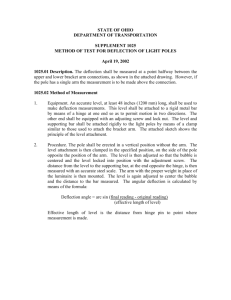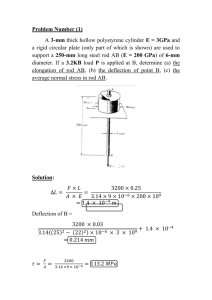Stat 301 Lab 9: Due April 15 Spring 2014
advertisement
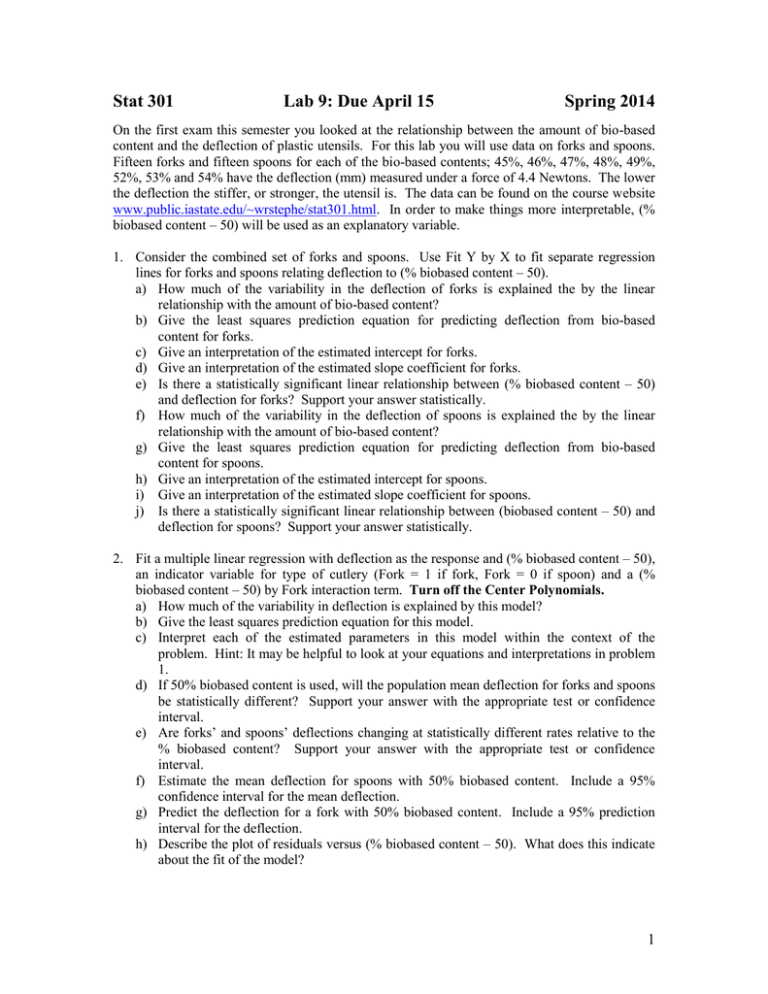
Stat 301 Lab 9: Due April 15 Spring 2014 On the first exam this semester you looked at the relationship between the amount of bio-based content and the deflection of plastic utensils. For this lab you will use data on forks and spoons. Fifteen forks and fifteen spoons for each of the bio-based contents; 45%, 46%, 47%, 48%, 49%, 52%, 53% and 54% have the deflection (mm) measured under a force of 4.4 Newtons. The lower the deflection the stiffer, or stronger, the utensil is. The data can be found on the course website www.public.iastate.edu/~wrstephe/stat301.html. In order to make things more interpretable, (% biobased content – 50) will be used as an explanatory variable. 1. Consider the combined set of forks and spoons. Use Fit Y by X to fit separate regression lines for forks and spoons relating deflection to (% biobased content – 50). a) How much of the variability in the deflection of forks is explained the by the linear relationship with the amount of bio-based content? b) Give the least squares prediction equation for predicting deflection from bio-based content for forks. c) Give an interpretation of the estimated intercept for forks. d) Give an interpretation of the estimated slope coefficient for forks. e) Is there a statistically significant linear relationship between (% biobased content – 50) and deflection for forks? Support your answer statistically. f) How much of the variability in the deflection of spoons is explained the by the linear relationship with the amount of bio-based content? g) Give the least squares prediction equation for predicting deflection from bio-based content for spoons. h) Give an interpretation of the estimated intercept for spoons. i) Give an interpretation of the estimated slope coefficient for spoons. j) Is there a statistically significant linear relationship between (biobased content – 50) and deflection for spoons? Support your answer statistically. 2. Fit a multiple linear regression with deflection as the response and (% biobased content – 50), an indicator variable for type of cutlery (Fork = 1 if fork, Fork = 0 if spoon) and a (% biobased content – 50) by Fork interaction term. Turn off the Center Polynomials. a) How much of the variability in deflection is explained by this model? b) Give the least squares prediction equation for this model. c) Interpret each of the estimated parameters in this model within the context of the problem. Hint: It may be helpful to look at your equations and interpretations in problem 1. d) If 50% biobased content is used, will the population mean deflection for forks and spoons be statistically different? Support your answer with the appropriate test or confidence interval. e) Are forks’ and spoons’ deflections changing at statistically different rates relative to the % biobased content? Support your answer with the appropriate test or confidence interval. f) Estimate the mean deflection for spoons with 50% biobased content. Include a 95% confidence interval for the mean deflection. g) Predict the deflection for a fork with 50% biobased content. Include a 95% prediction interval for the deflection. h) Describe the plot of residuals versus (% biobased content – 50). What does this indicate about the fit of the model? 1
